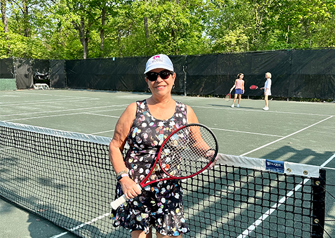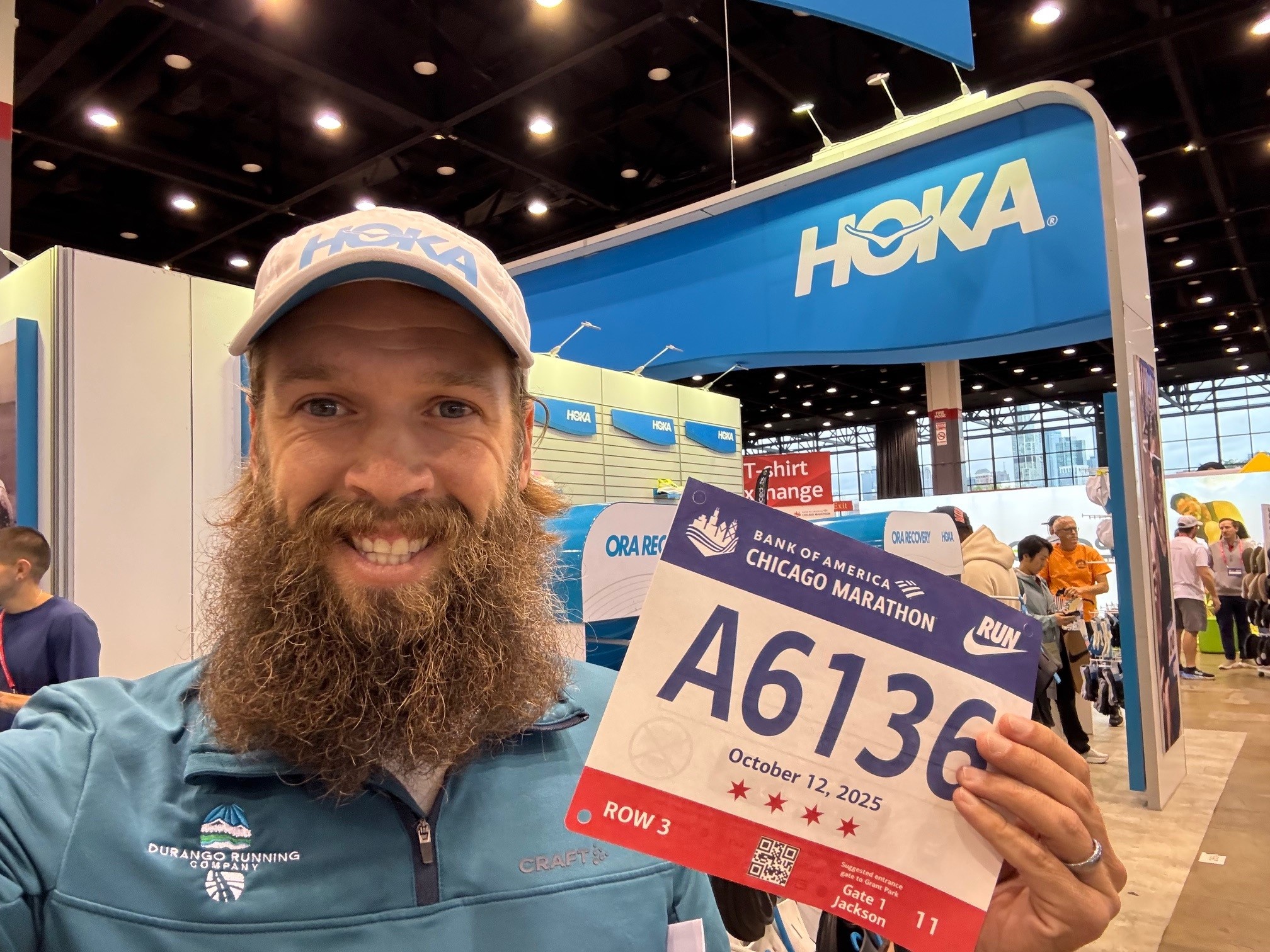
Patient Stories
Longtime tennis player back to the court after partial knee replacement
Date posted: 6/9/2023
Last updated: 6/9/2023
Table of Contents
To say that Gina Quatrochi of Long Grove, IL, enjoys tennis is an understatement. The 68-year-old has been playing the sport for more than 30 years and played competitively on both USTA and CITA teams over the years.
However, about ten years ago, knee pain caused her to slow down and become concerned that her tennis game would suffer. She also worried that doing ordinary things, like walking up and down the stairs at home without discomfort would be difficult.
Motivated to pursue the best treatment option, Gina went online and researched orthopedic physicians specializing in the knee. She liked what she read about Vasili Karas, M.D., M.S, a hip and knee surgeon at Midwest Orthopaedics at Rush, so she scheduled an appointment right away.
During their initial visit, Dr. Karas listened closely as Gina explained her symptoms. He ordered imaging and they discussed the results the same day. Dr. Karas explained that Gina had evidence of arthritis in just one section of her knee joint, called unicompartmental arthritis, which was likely causing her pain. With cartilage degeneration in just one compartment of her knee, Dr. Karas explained that she was a candidate for a partial knee replacement, not a total knee replacement.
"Gina is a super active patient and wanted to ensure she could continue to be so,” explains Dr. Karas. “We did a partial knee replacement for her so she could get to what she loves quickly and with her knee feeling as natural as possible. Partial knee replacements are a great option for patients like her. As we expected, she ended up getting back to her activities of daily living within weeks and back to her higher-level activities within months of surgery.”
"As we expected, she ended up getting back to her activities of daily living within weeks and back to her higher-level activities within months of surgery.”
Partial knee replacement surgery and recovery
During a partial knee replacement procedure, a patient’s bone surface in just one compartment of the knee joint is removed and replaced with an implant. This can also rebalance the knee which improves stability. Because a partial knee replacement is performed through a smaller incision, patients usually spend little or no time in the hospital and return to normal activities sooner than total knee replacement patients.
Gina, with returning to the court on her mind, scheduled surgery with Dr. Karas at Rush Oak Park Hospital. As Dr. Karas promised, the surgery was a success, and she walked up and down stairs in the hospital the same day. Later that day, Dr. Karas cleared her to return home.
Once home, Gina maintained a regimen of pain medication for a couple of weeks and started physical therapy in her home right away. After a short time, she continued her therapy with a physical therapist outside her home. Her goal was to achieve a 120-degree range of motion and she joyfully graduated from therapy when she achieved a 130-degree bend in her knee.
And Gina’s tennis?
Today, Gina plays in the Fox Valley women’s tennis league and often with friends just for fun. She walks long distances and no longer worries about walking on uneven surfaces. She is planning to try pickleball this summer.
Gina is beginning to have some pain in her other knee. “I have no problem going through another knee surgery,” she explains. “I had such a good experience with my first one. Dr. Karas and his staff made me very happy.”


